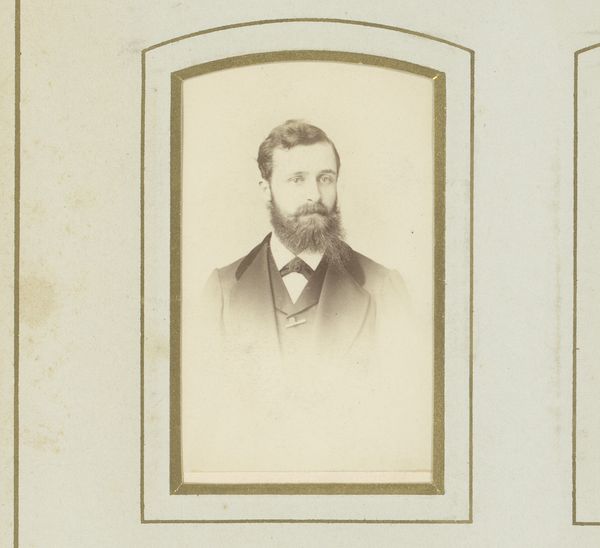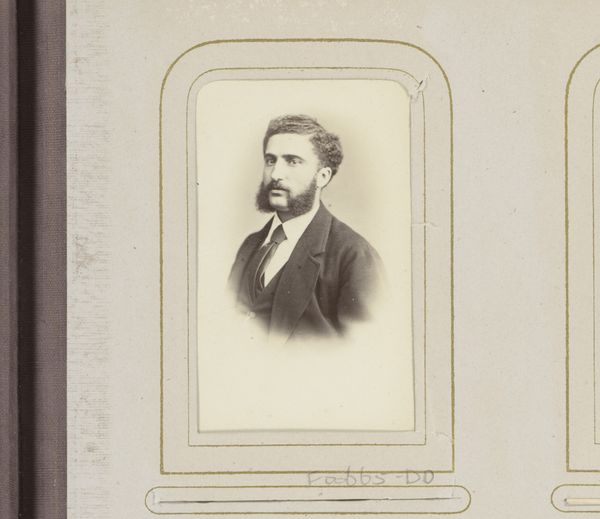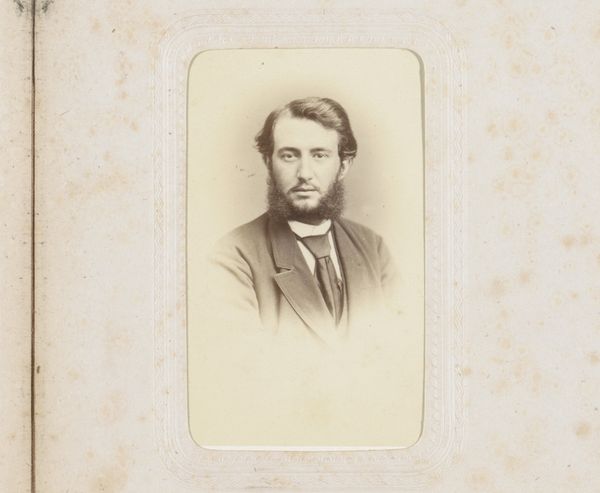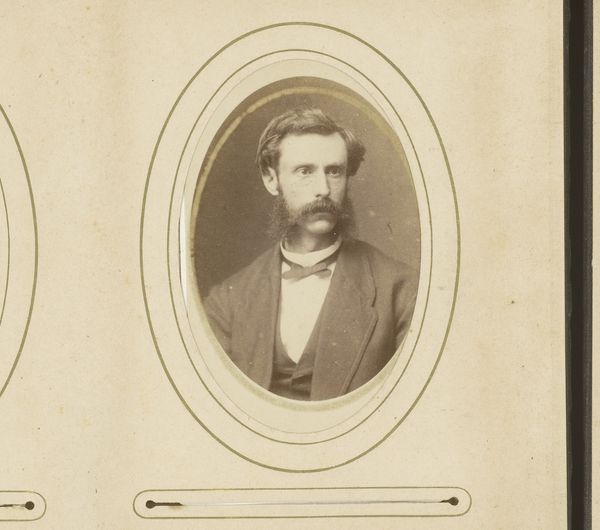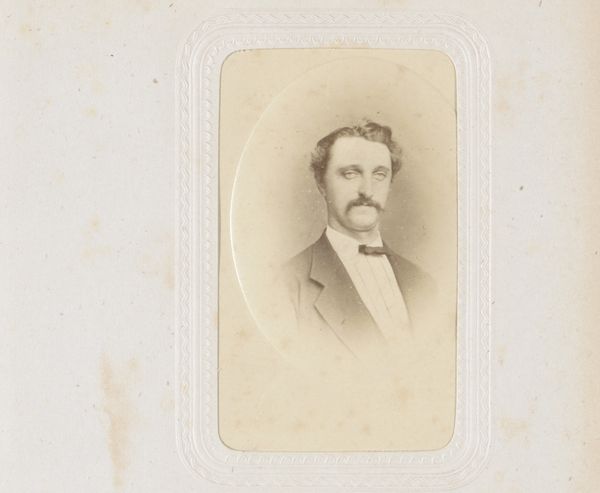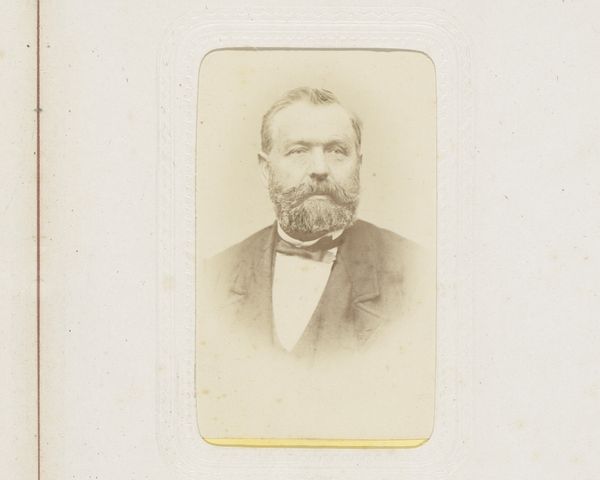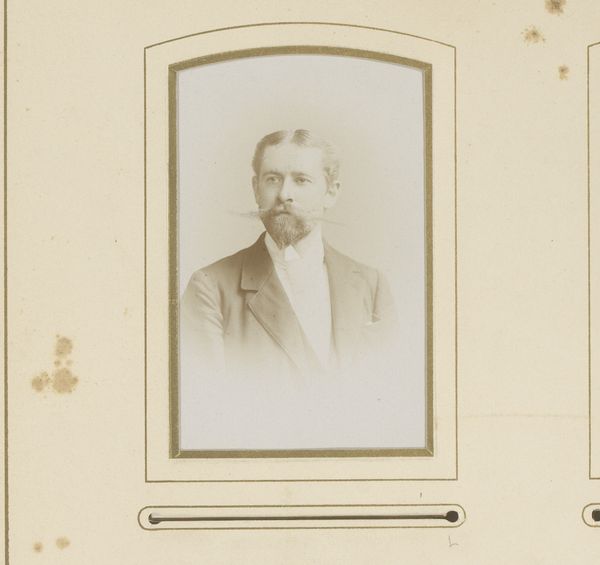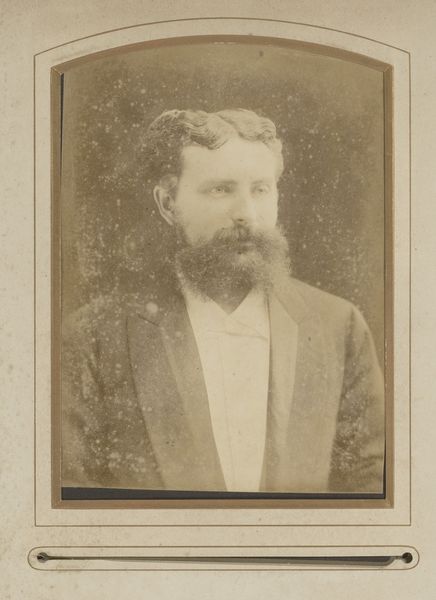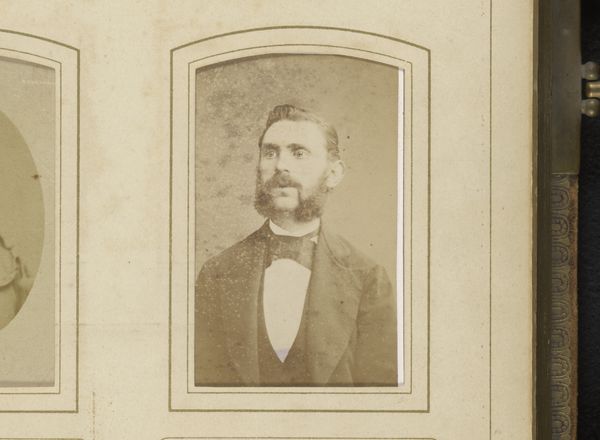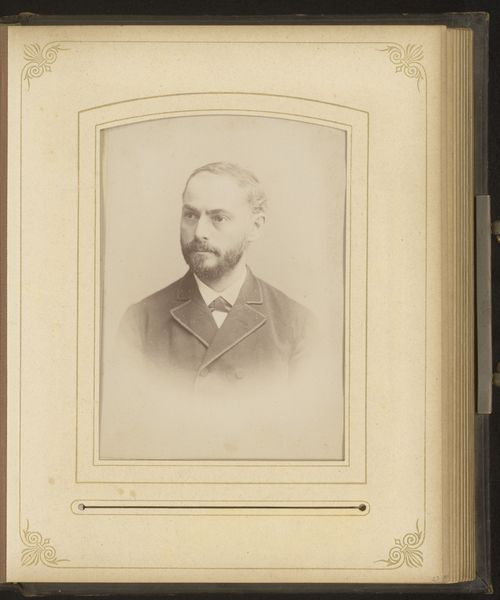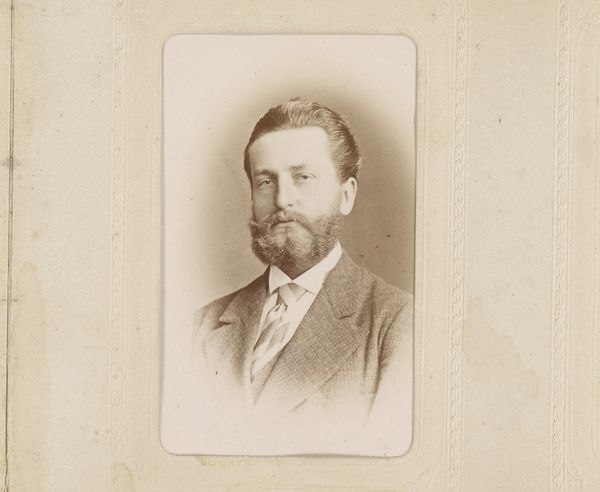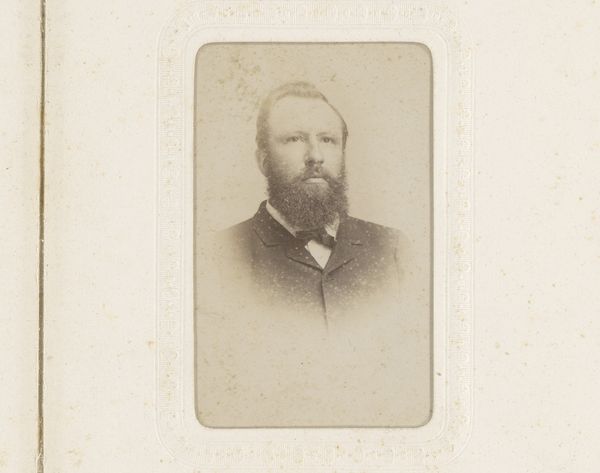
photography, gelatin-silver-print
#
portrait
#
16_19th-century
#
photography
#
gelatin-silver-print
Dimensions: height 82 mm, width 49 mm
Copyright: Rijks Museum: Open Domain
Editor: Here we have an albumen print from between 1850 and 1900, "Portrait of a man with mustache and beard," likely by Louis Koch. The sepia tone and stiff pose give it a sense of formality, but I'm curious—what social narratives might be embedded in this type of portraiture? Curator: This is a fascinating entry point. Think about the rise of photography in the mid-19th century and who had access to it. Portraiture, once reserved for the elite through painting, becomes available to a burgeoning middle class. What does this democratization of image-making tell us about shifting social hierarchies and the desire for representation? How might the sitter in this portrait be positioning himself within those shifts? Editor: That's a great point. The fact that he’s dressed in a suit, has carefully groomed facial hair--it speaks to a certain aspiration. Curator: Exactly. This portrait becomes an assertion of identity and status. But let's also consider the gaze. His direct, yet somewhat reserved expression. What does that communicate? Is he participating in or perhaps even subverting conventional notions of masculinity within his cultural context? We could research photographic portraiture in the Netherlands, particularly of the middle class, during that period. That may allow us to expand on gender roles and political climate at that time. Editor: So by looking closely, we can see that even a seemingly simple portrait offers a rich perspective into the society of its time, and can become a powerful social commentary? Curator: Precisely. It invites us to question what it meant to be seen, and to claim a space within the visual landscape, and further, invites conversations about the subject's socio-economic status and gender identity. Editor: Thanks, this definitely changed how I'll look at portraits from now on. Curator: Indeed, seeing art as cultural mirrors encourages us to consider multiple perspectives on gender, class and race that contribute to creating dialogues.
Comments
No comments
Be the first to comment and join the conversation on the ultimate creative platform.
